How to plant freesia bulbs: easy steps for colourful summer blooms
If you're looking to add some vivid colour and life to your garden, freesias are the perfect choice
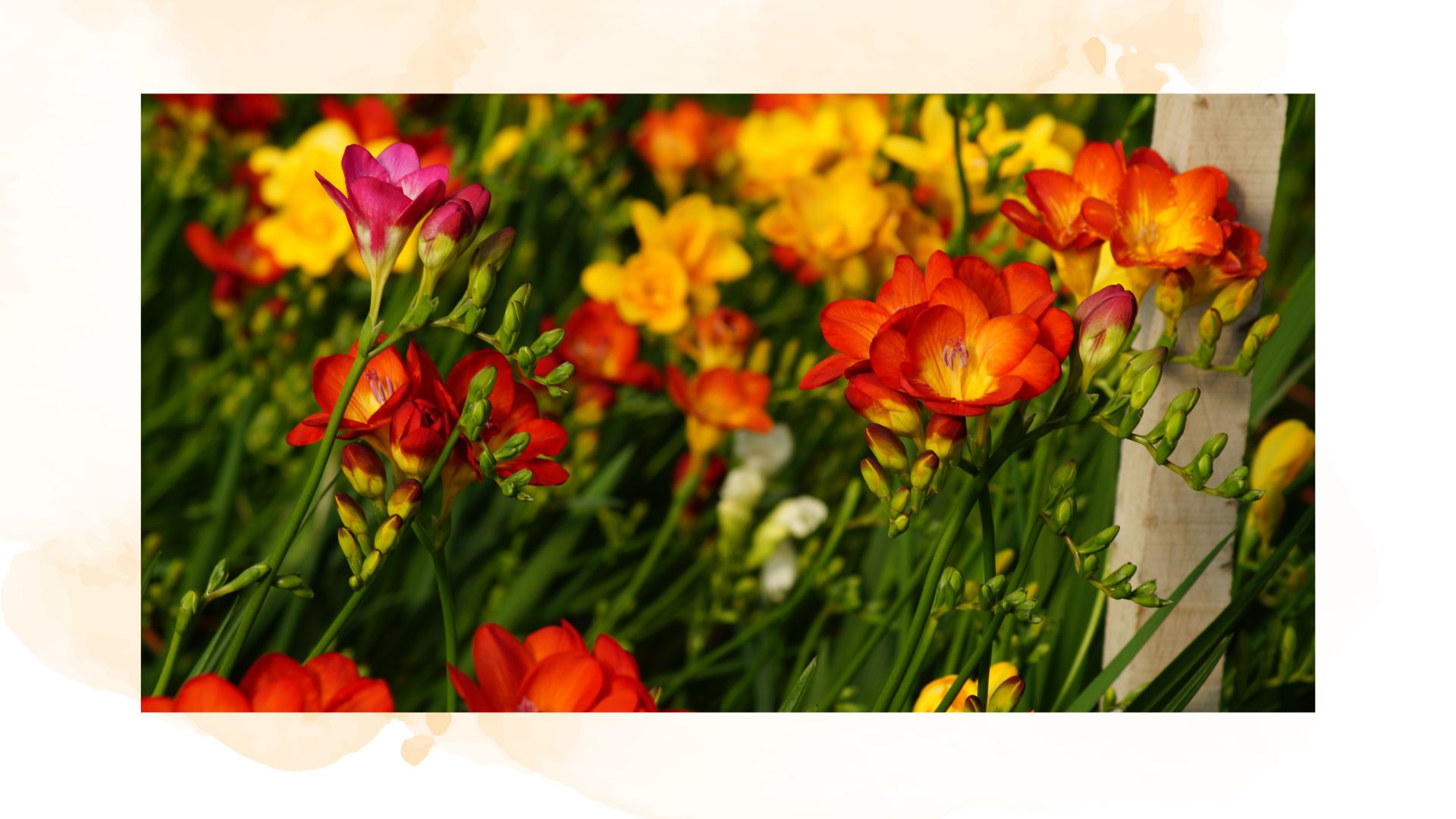

If you're looking for trusted beautiful blooms to brighten up your garden this summer, look no further than Freesias.
As one of the best plants you can grow from bulbs, freesias are great for bringing some much-needed colour and vitality to your garden. Alongside our favourite late summer flowers, these plants will keep your space looking happy all summer long, through to late autumn.
Knowing how to plant freesia bulbs effectively ensures you get the most out of these beloved flowers. Luckily our team of gardening experts are here to help.
How to plant freesia bulbs: an expert guide
Freesias are some of the best cottage garden plants thanks to their uplifting colours. They make great plants for pollinators and can be easily grown when taking the right care and steps.
To ensure you get the very best summer display, we have asked our team of gardening experts for their best advice for planting freesia bulbs and caring for them until they bloom.
Shop planting essentials
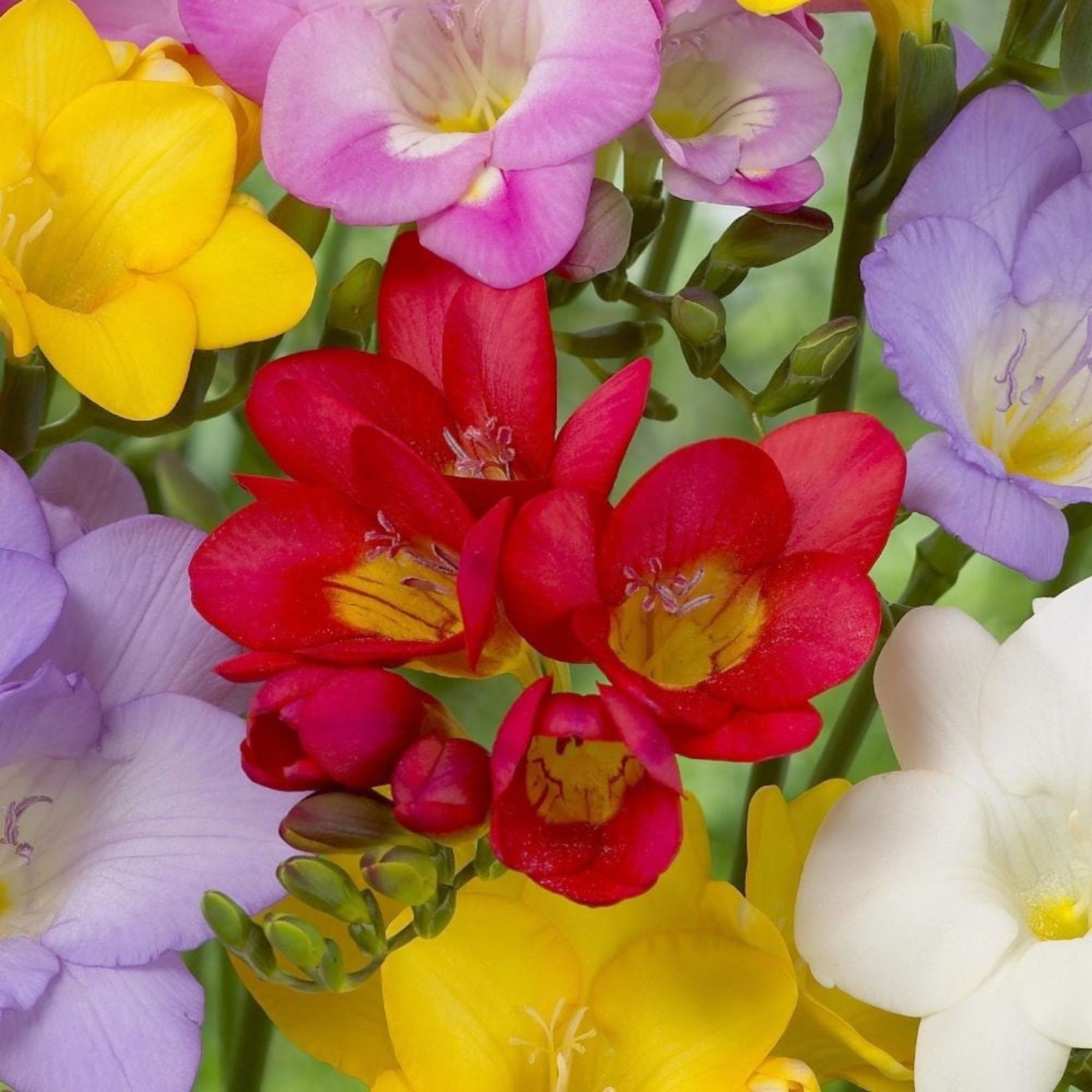
RRP: £3.49 | An undeniable cottage garden favourite, these flowers are sure to light up your outdoor space. This particular mix has a variety of bright summer colours and is ideal for patio pots or borders.
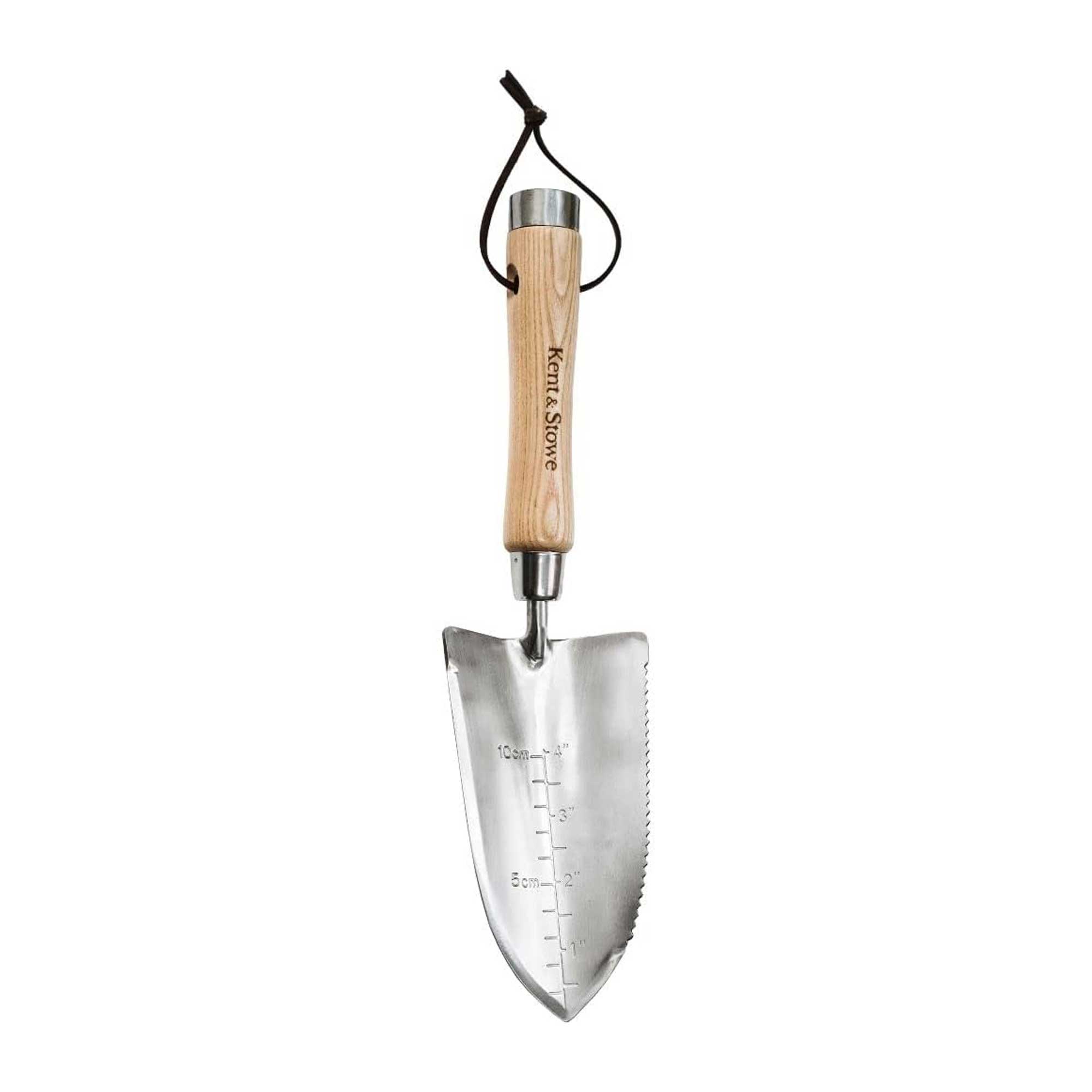
RRP: £13.50 | This trowel is ideal for getting started on outdoor planting and is comfortable to use thanks to its wooden handle.
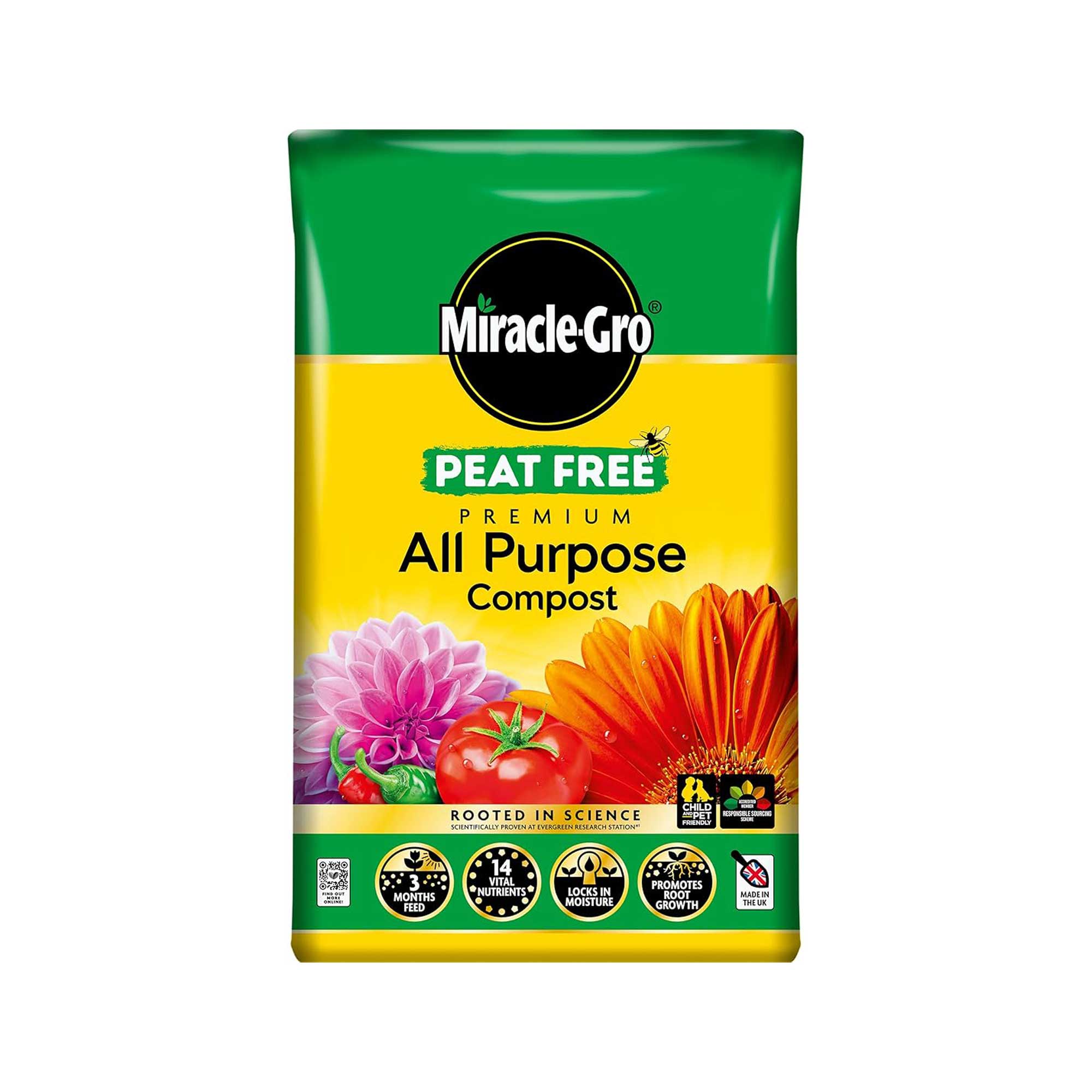
RRP: £12.99 | This popular mix from Miracle-Gro can be used to plant flowers and seedlings in containers. It includes coir, which is great for absorbing water and keeping plants hydrated.
1. Choose the right spot
Before you plant anything, you'll need to make sure you're planting it in the right spot so it can thrive properly. After all, you would never put shade-loving plants in a sunny spot.
"The best place for freesias is a well-drained spot that is sunny and receives plenty of direct sunlight," explains Jane Dobbs, lead gardener at Allan's Gardeners. "To prevent waterlogging, ensure the soil is loose, slightly acidic to neutral, and well-drained."
Sign up for the woman&home newsletter
Sign up to our free daily email for the latest royal and entertainment news, interesting opinion, expert advice on styling and beauty trends, and no-nonsense guides to the health and wellness questions you want answered.
Knowing your soil type can make these decisions much easier as you'll be able to determine the appropriate conditions in your garden.

Gardening is Jane's passion, having built and maintained stunning outdoor spaces for over a decade. Taking care of all the garden projects at Allans' Gardeners is her responsibility as lead gardener. A wide range of horticultural practices come into play in Jane's work, from landscape design to plant and lawn care.
2. Prepare the soil and plant the bulbs
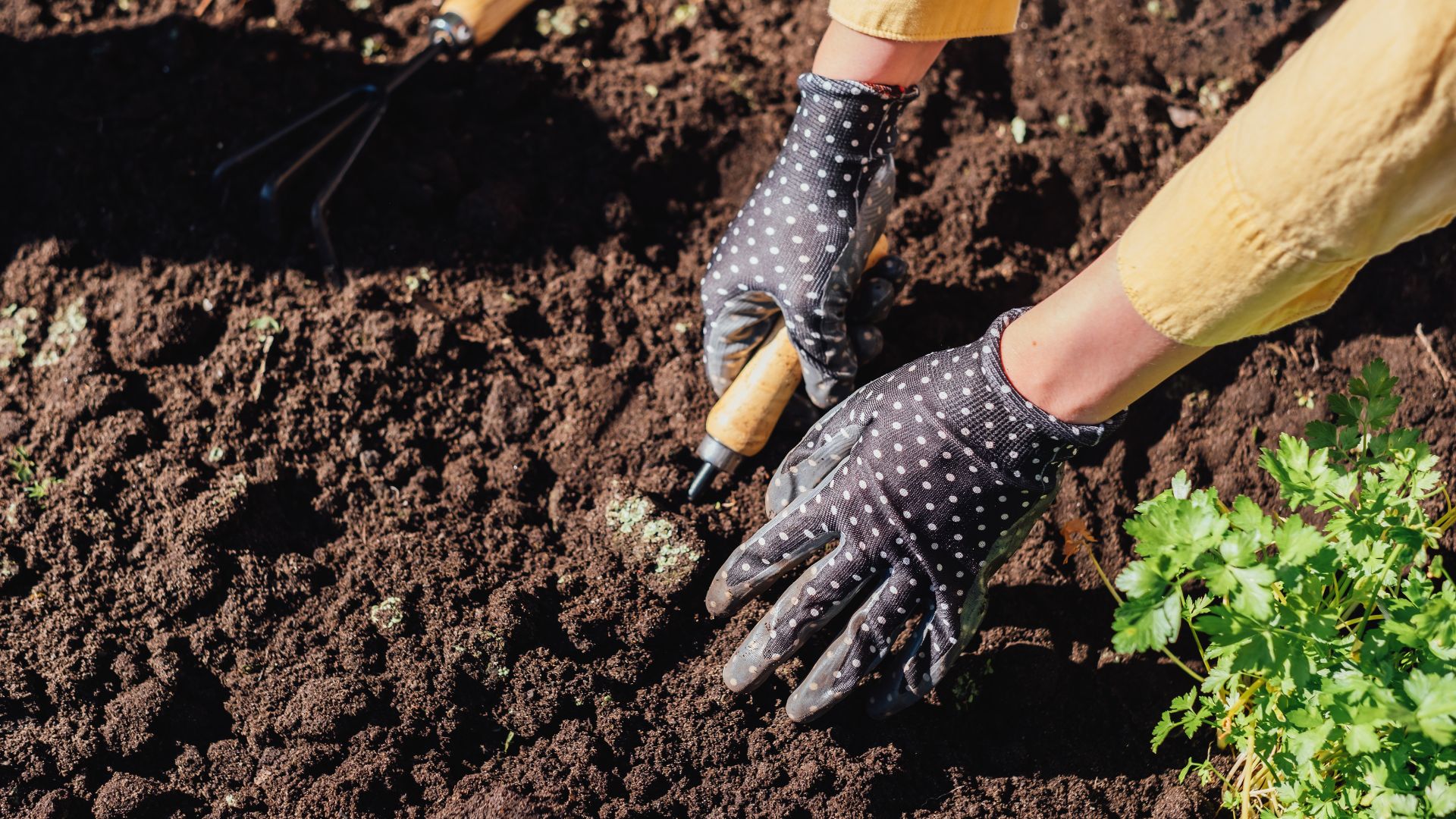
When you've chosen the perfect spot you can start the planting process. You'll need your essential gardening tools at the ready for this step.
"Prepare the soil by loosening it up to a depth of 10-15 cm. If your soil is heavy, compost or sand can help. You can boost freesia growth by adding a balanced fertiliser," says Jane.
After this, place your freesia bulbs with the pointed end upwards around 5 to 8cm deep in the soil.
"Give them a space of 10 cm between them so they can grow. After planting the bulbs, water them to moisten the soil but not over-wet it and water the bulbs less once they begin to grow," Jane adds.
3. Cover the bulbs and water
After planting the bulbs, it's now just a case of covering them over and ensuring they have everything they need going forward.
Jane says, "You can add mulch to help retain moisture and regulate soil temperature, but make sure the layer isn't too thick to suffocate the bulbs."
"When blooming begins, reduce watering slightly and ensure they get enough sunlight. Freesias bloom in 12-16 weeks, so be patient," she continues.
When should freesia bulbs be planted?
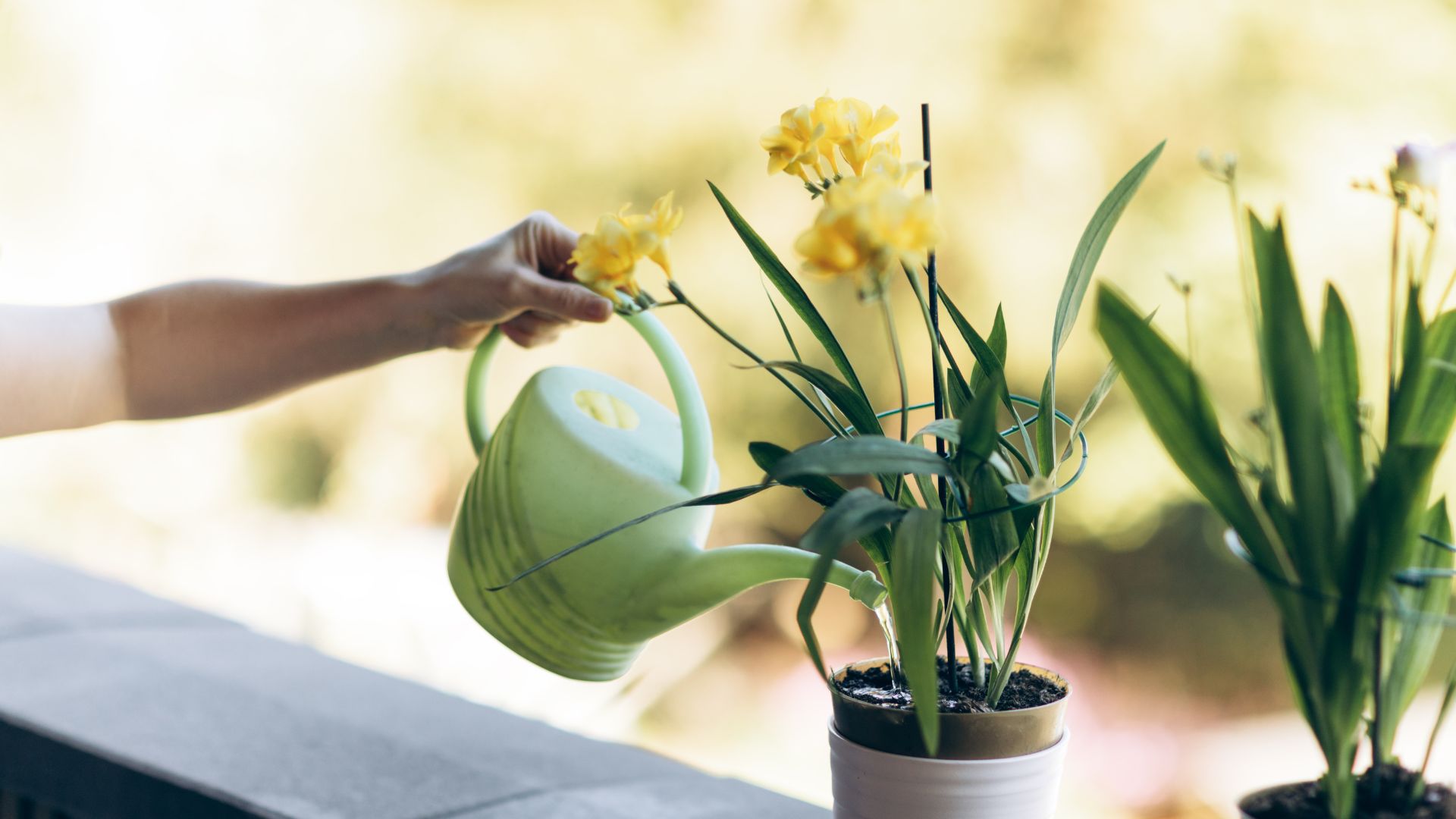
Similar to the timeline when you plant other summer bulbs, freesias have a pretty strict schedule so that you can enjoy them for as long as possible.
"When you should plant freesia bulbs will vary depending on where you are going to be planting them," explains Graham Smith MCIHort, horticulture expert from LBS Horticulture. "However, for planting outdoors, freesias can be planted from April to June."
It's recommended to wait until the soil in your garden reaches around 15 degrees, that way the bulbs have the best chance.

Graham has extensive knowledge in the horticultural and gardening industries, and prides himself on using this to help gardeners of all skills create their perfect outdoor space.
FAQs
Do you soak freesia bulbs before planting?
"There is no need to soak freesia bulbs before planting, but it can be beneficial. You can speed up germination by soaking the bulbs, especially if they're dry or have been sitting around for a long time," explains Jane.
You'll find it's a similar process to how you grow dahlias after storing their tubers over winter. For freesias, Jane recommends rehydrating them by soaking them in lukewarm water for 2-4 hours before planting.
However, she does point out that most freesia bulbs will grow absolutely fine without being soaked.
Do freesias come back every year?
If you know how to grow tulips each year, you'll no doubt love the fact that they naturally die back and show their heads once again the next year. Freesias are thankfully the same.
"Freesias can return every year, but they will need to be dug up over winter if planted outside, as they are not frost-hardy," says Graham. "After they have finished flowering, cut off the faded flower stem and gradually reduce how often you water the plant as the leaves turn yellow and die off."
Then, when the leaves have died back completely, he recommends lifting the bulbs from the soil and drying them out before storing them for planting in the new year.
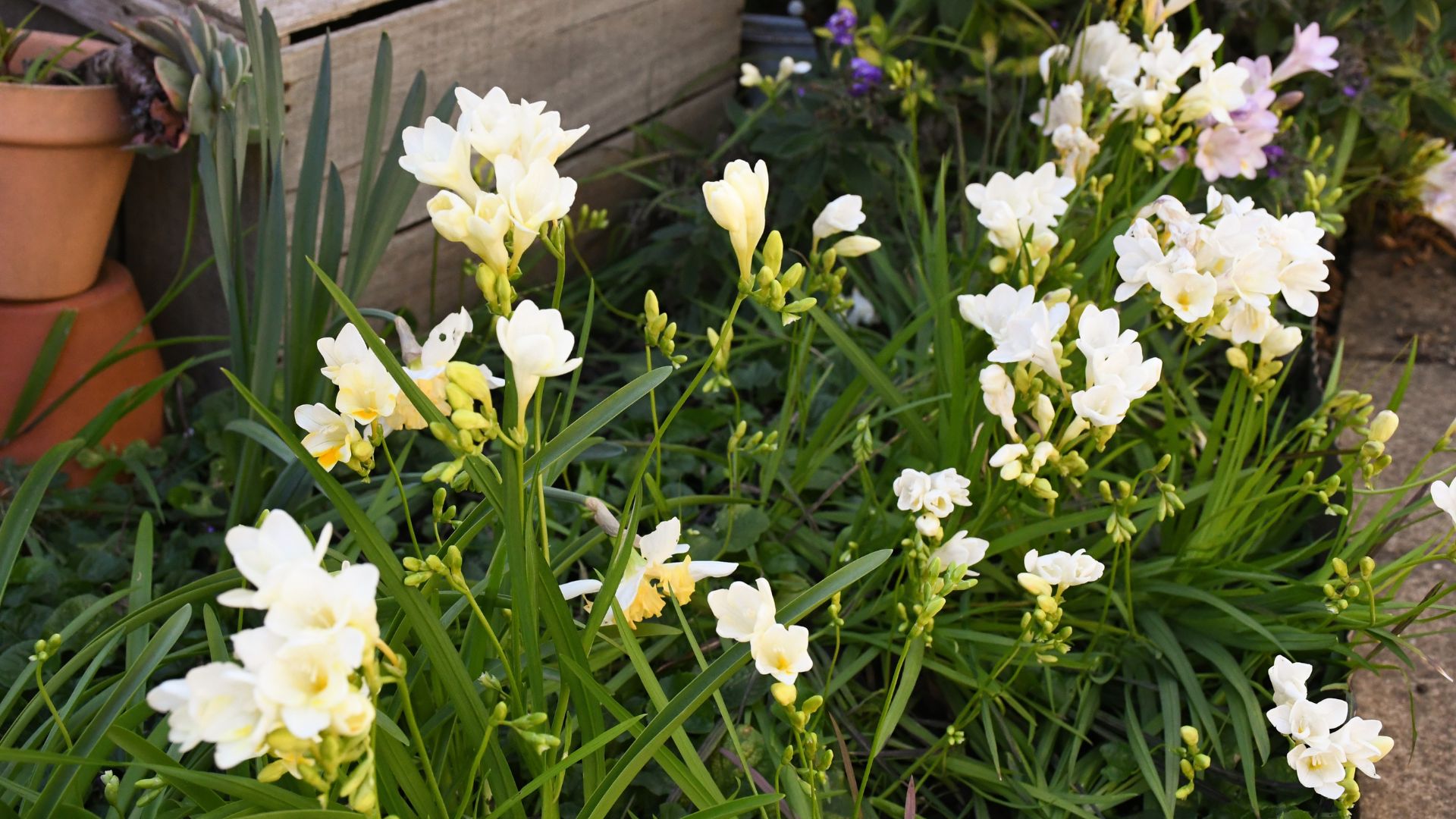
Can I plant freesias in pots?
Freesias make fantastic patio container plants and can even be kept indoors in pots too. Graham says planting the bulbs in pots is just as simple as the ground in your garden.
"Fill a container with potting compost mixed with horticultural grit to aid drainage. Then, plant the bulbs 5cm to 8cm apart, with the pointed tips just above compost level," he explains.
"Water the bulbs well, and stand the pot somewhere cool and shaded, with a temperature of 5°C. After 3 to 4 weeks shoots should appear, and the pots can be moved to a warmer, sunnier location," he finishes.
Planting bulbs and sowing seeds can be a great way of transforming your garden on a budget. Especially if you've overwintered the bulbs and collected the seeds from existing plants in your garden.

Emily joined woman&home as a staff writer after finishing her MA in Magazine Journalism from City University in 2023. After writing various health and news content, she now specialises in lifestyle, covering unique cleaning hacks, gardening how-tos, and everything to help your houseplants thrive.
-
 Friends quotes that will never get old
Friends quotes that will never get oldThe One With The Quotes You’ll Never Forget; relive the lines that made Friends legendary...
By Natalie Denton Published
-
 Cherry blossoms aren't just blooming outside, they're springing up in our beauty bags too - here are 9 buys to embrace the soft trend
Cherry blossoms aren't just blooming outside, they're springing up in our beauty bags too - here are 9 buys to embrace the soft trendFrom delicate, floral fragrances to cherry blossom-powered skincare, the beauty world is besotted with the pink flower this spring...
By Naomi Jamieson Published
-
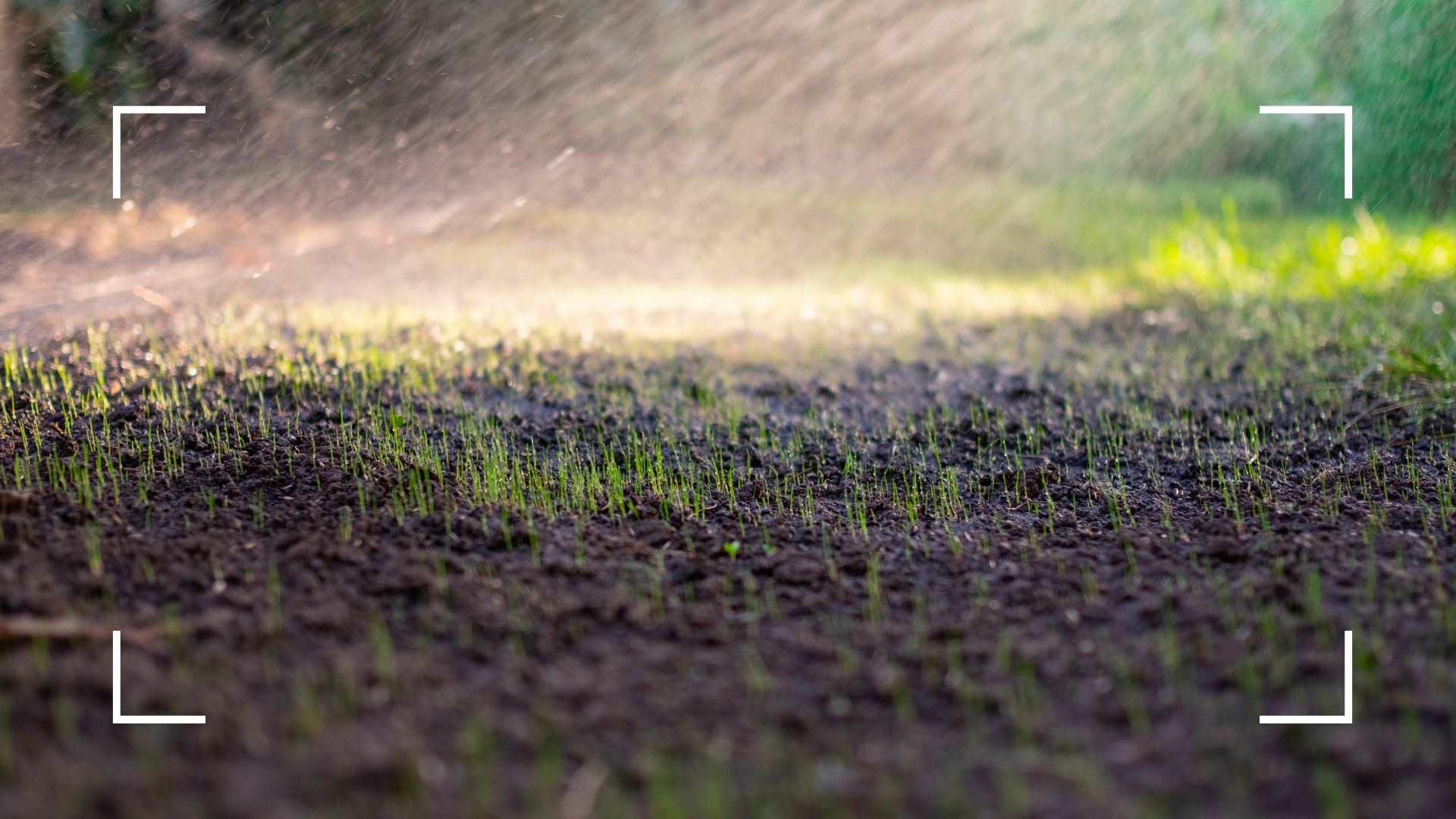 Gardening experts reveal how often you should water grass seed for a luscious lawn this summer
Gardening experts reveal how often you should water grass seed for a luscious lawn this summerWant your lawn to be looking its best by the time summer rolls around? You'll need to make sure you're watering it the perfect amount
By Emily Smith Published
-
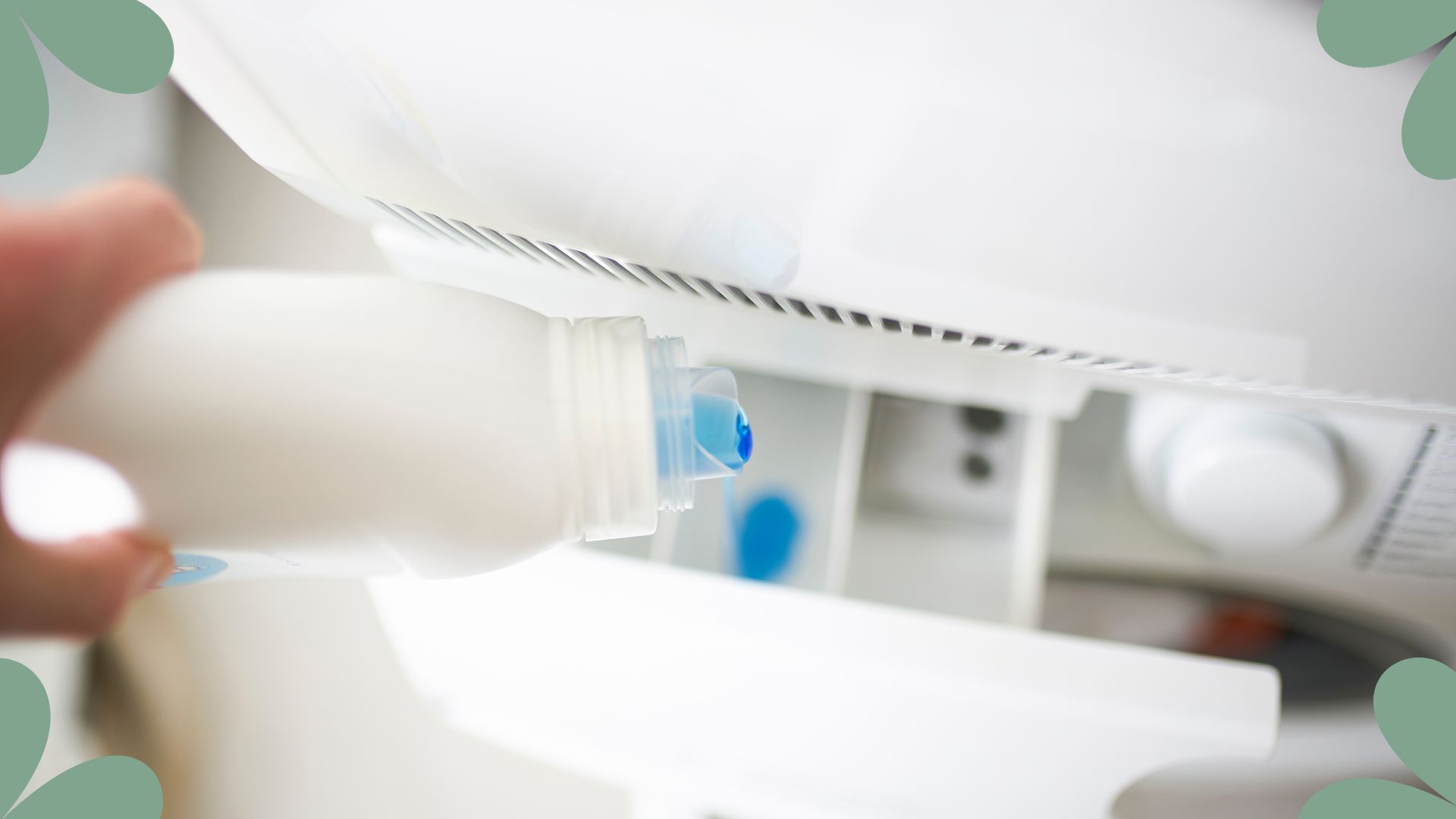 Lynsey Crombie reveals the surprising laundry mistake leaving your clothes smelling 'stale and nasty'
Lynsey Crombie reveals the surprising laundry mistake leaving your clothes smelling 'stale and nasty'Do your clothes smell unpleasant even after you've washed them? It could be your fabric conditioner
By Emily Smith Published
-
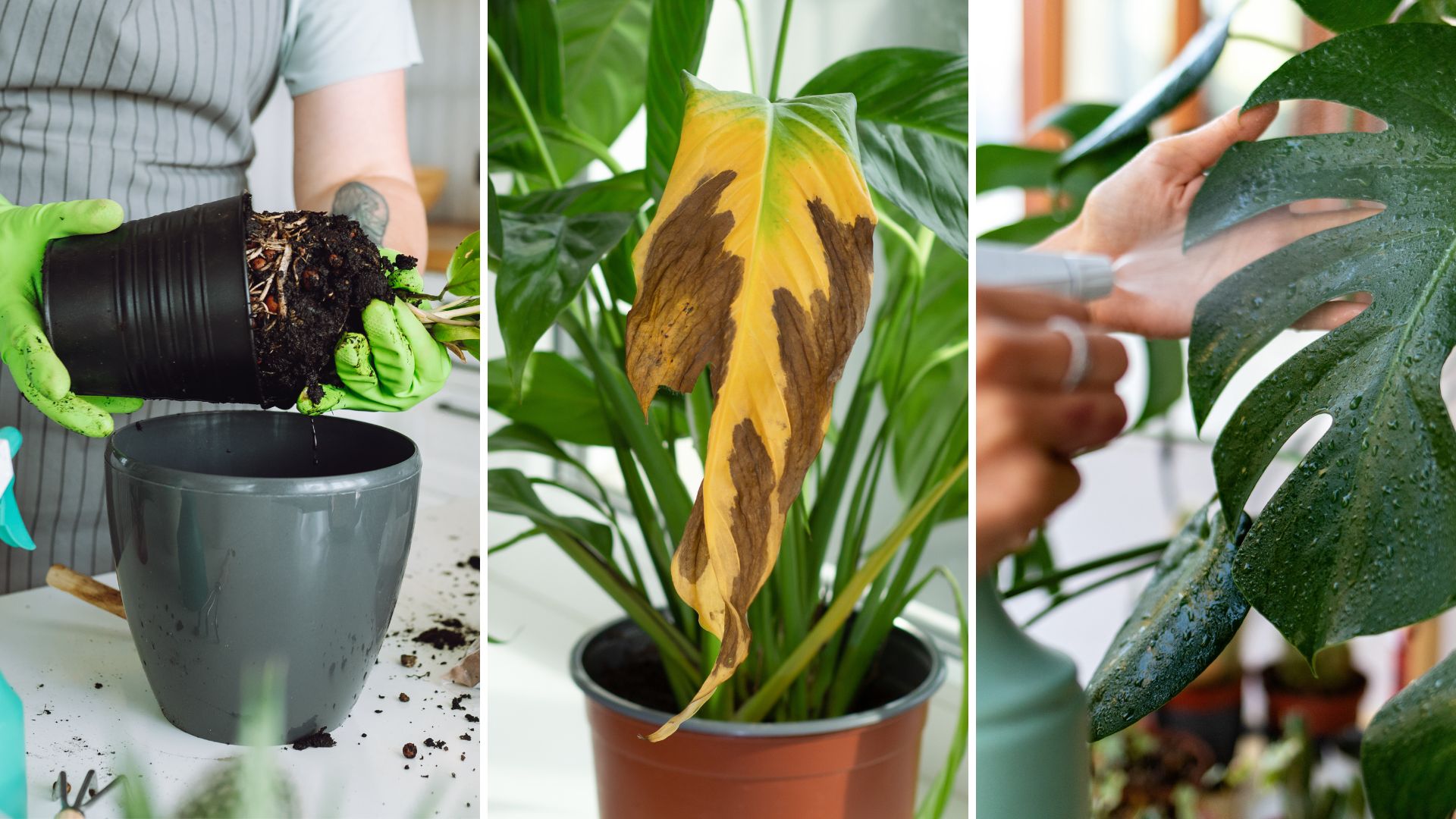 6 common houseplant myths to ignore, warn horticulture experts
6 common houseplant myths to ignore, warn horticulture expertsThese common misconceptions about caring for indoor plants might surprise you – they feel perfectly logical
By Emily Smith Published
-
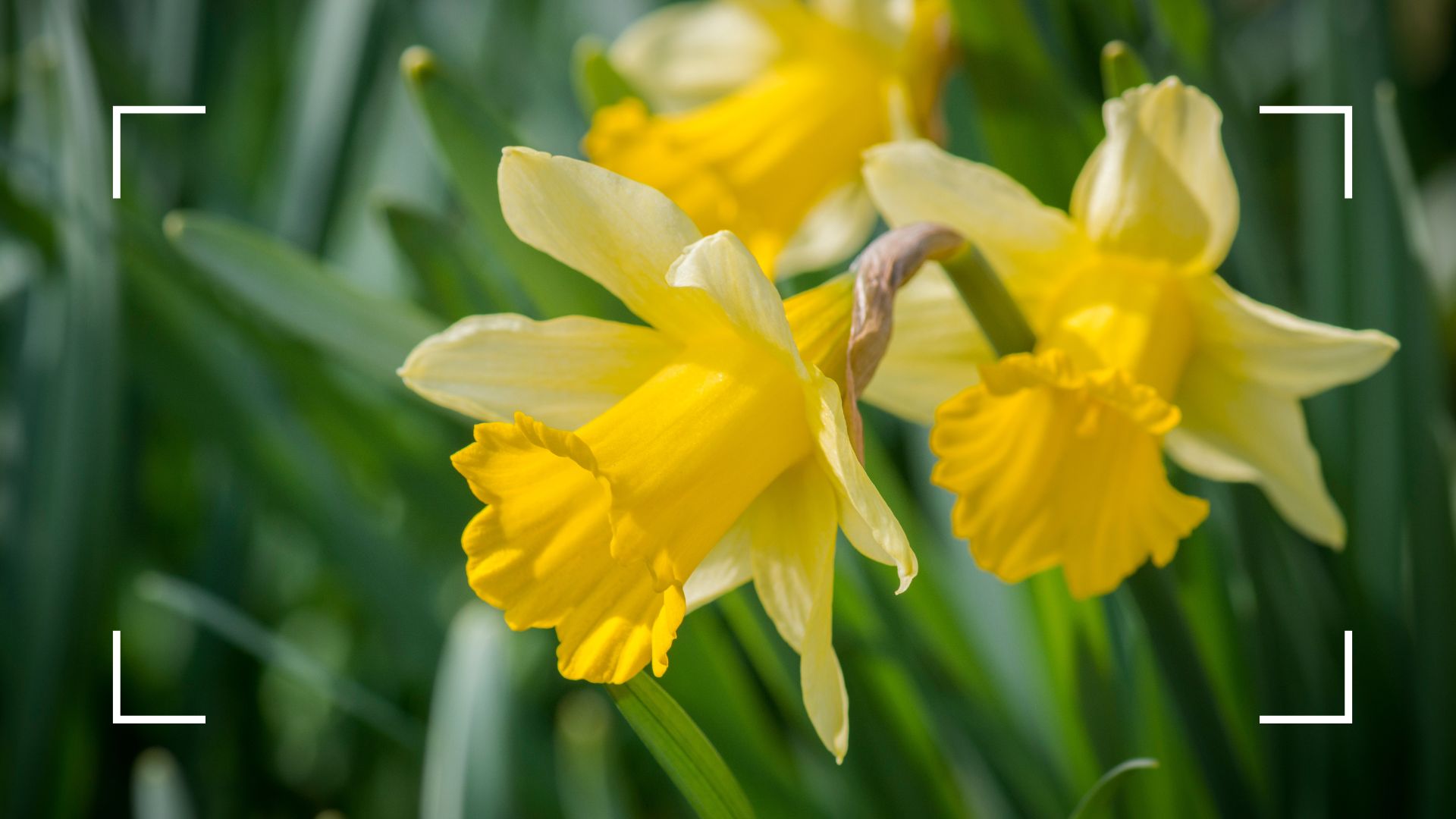 Should you deadhead daffodils? Gardening experts share their advice for longer-lasting blooms
Should you deadhead daffodils? Gardening experts share their advice for longer-lasting bloomsThese butter-yellow flowers are one of the first signs of spring, but should you deadhead or leave them be?
By Emily Smith Published
-
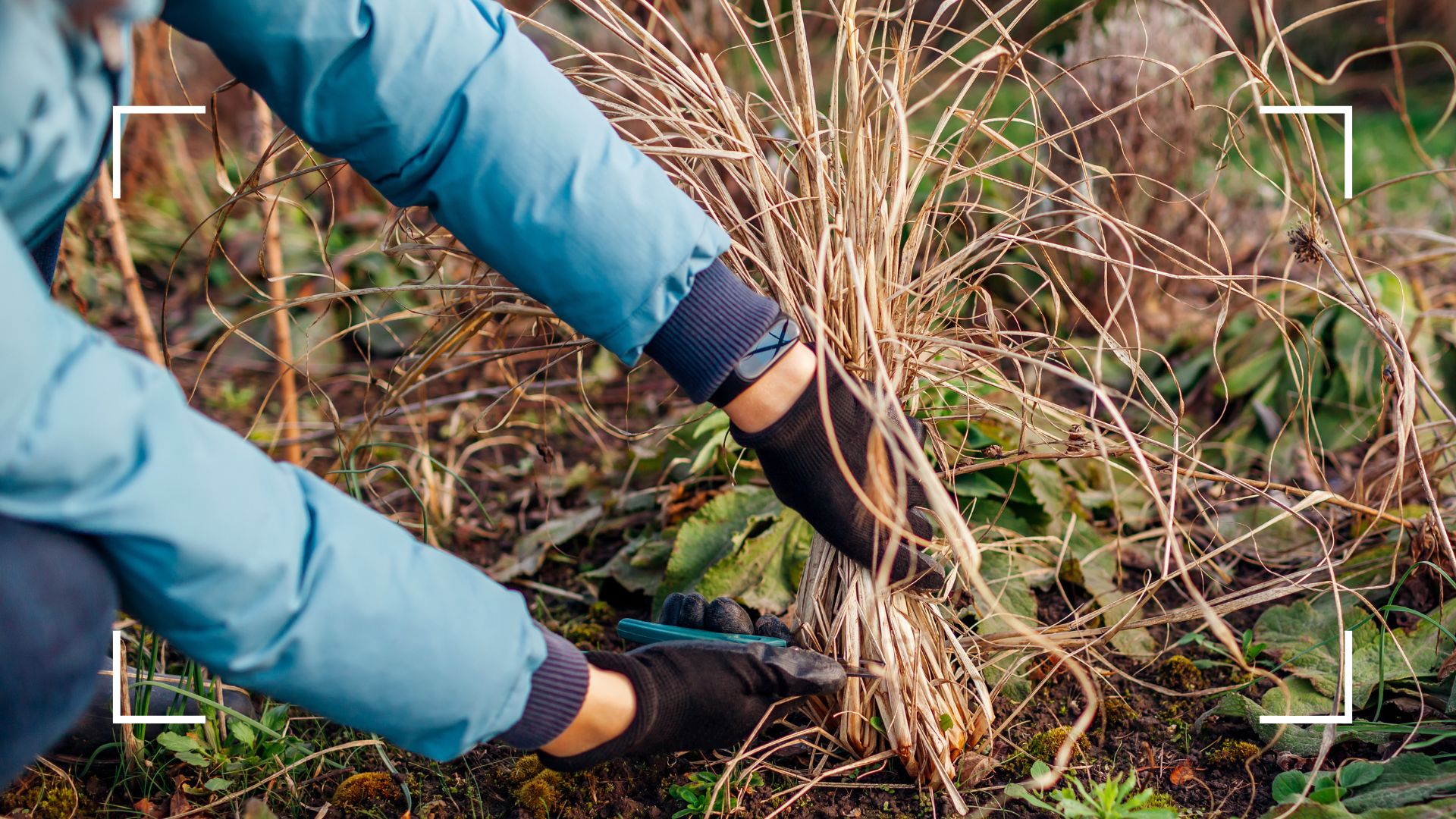 It's time to cut back ornamental grasses, and the expert team at Sarah Raven are here to help
It's time to cut back ornamental grasses, and the expert team at Sarah Raven are here to helpWith spring well and truly here, the team share their top tips to get ornamental grasses ready for new growth
By Emily Smith Published
-
 Monty Don's 'genius' planting trick gives outdoor plants the best chance of thriving
Monty Don's 'genius' planting trick gives outdoor plants the best chance of thrivingThis mess-free trick will make planting seamless - and give your plant a great headstart
By Emily Smith Published
-
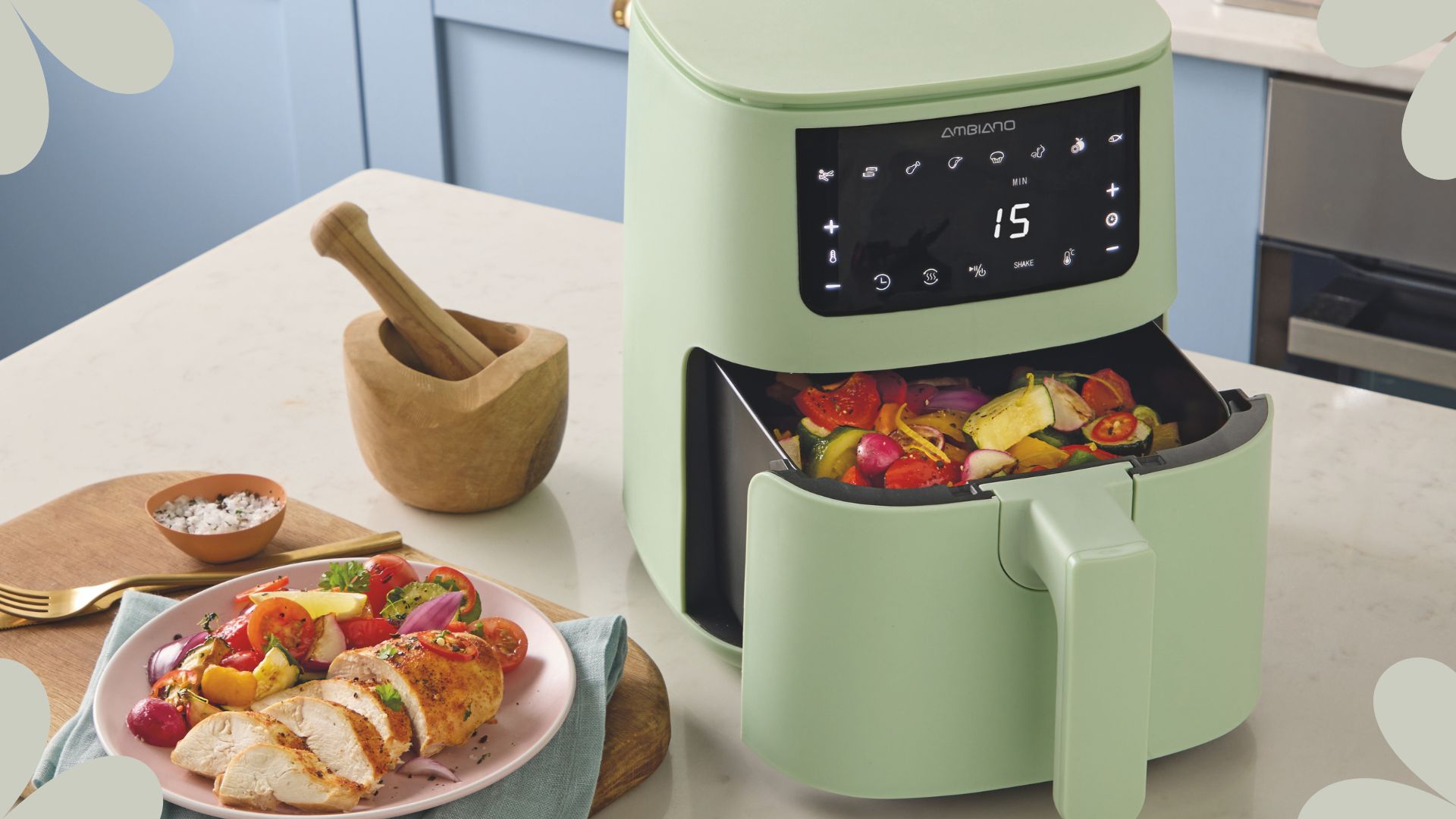 Aldi's on-trend pistachio green air fryer is just £29.99 – stylish and affordable, I had to get one
Aldi's on-trend pistachio green air fryer is just £29.99 – stylish and affordable, I had to get oneColourful, compact and cheaper than comparative models – all the ingredients that made this Aldi Specialbuy hard to resist
By Tamara Kelly Published
-
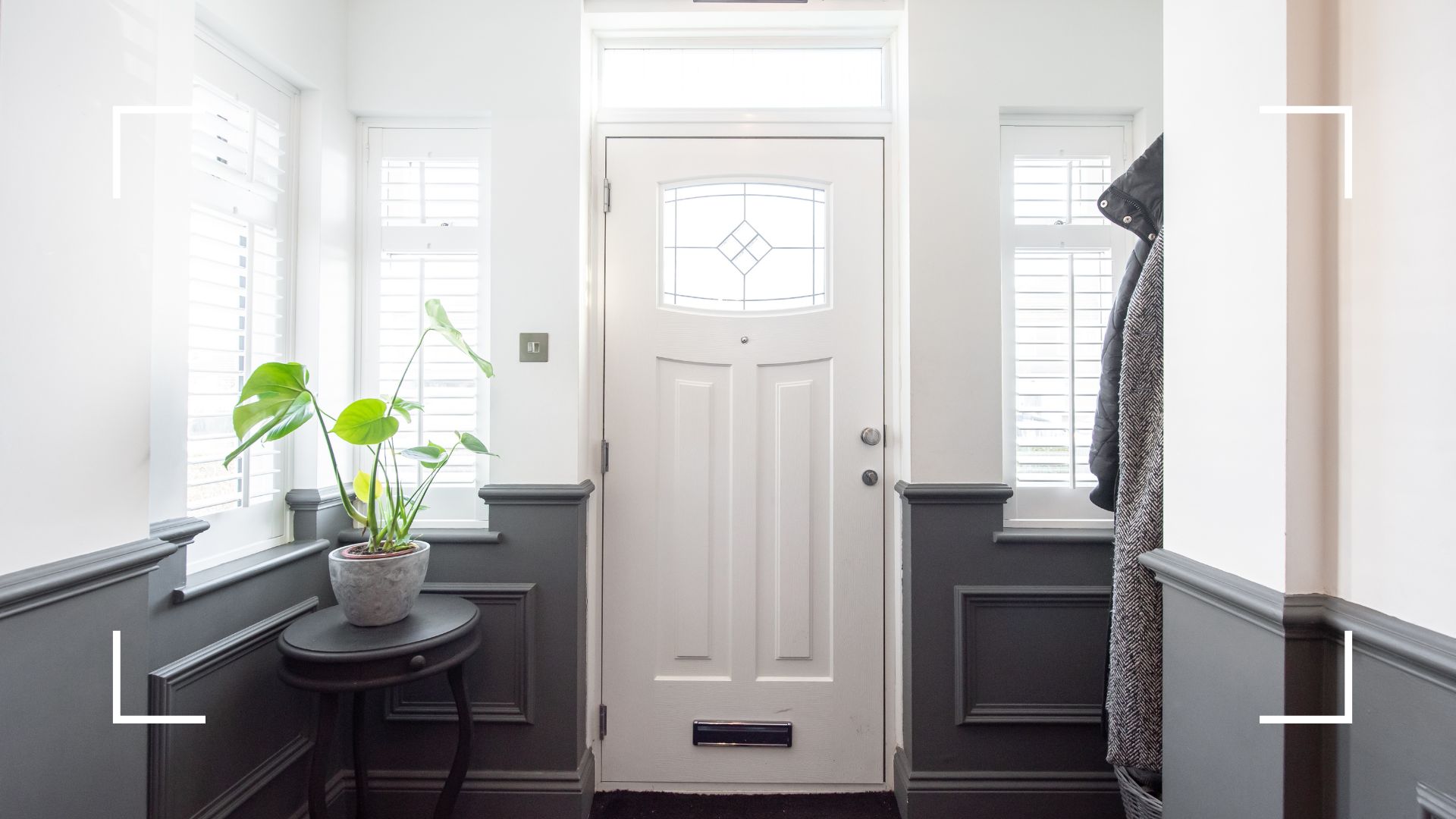 5 simple changes you can make to lower your home insurance premium, reveals an indemnity expert
5 simple changes you can make to lower your home insurance premium, reveals an indemnity expertWhether you're looking to cut costs or improve security, these savvy tricks can help with both
By Emily Smith Published